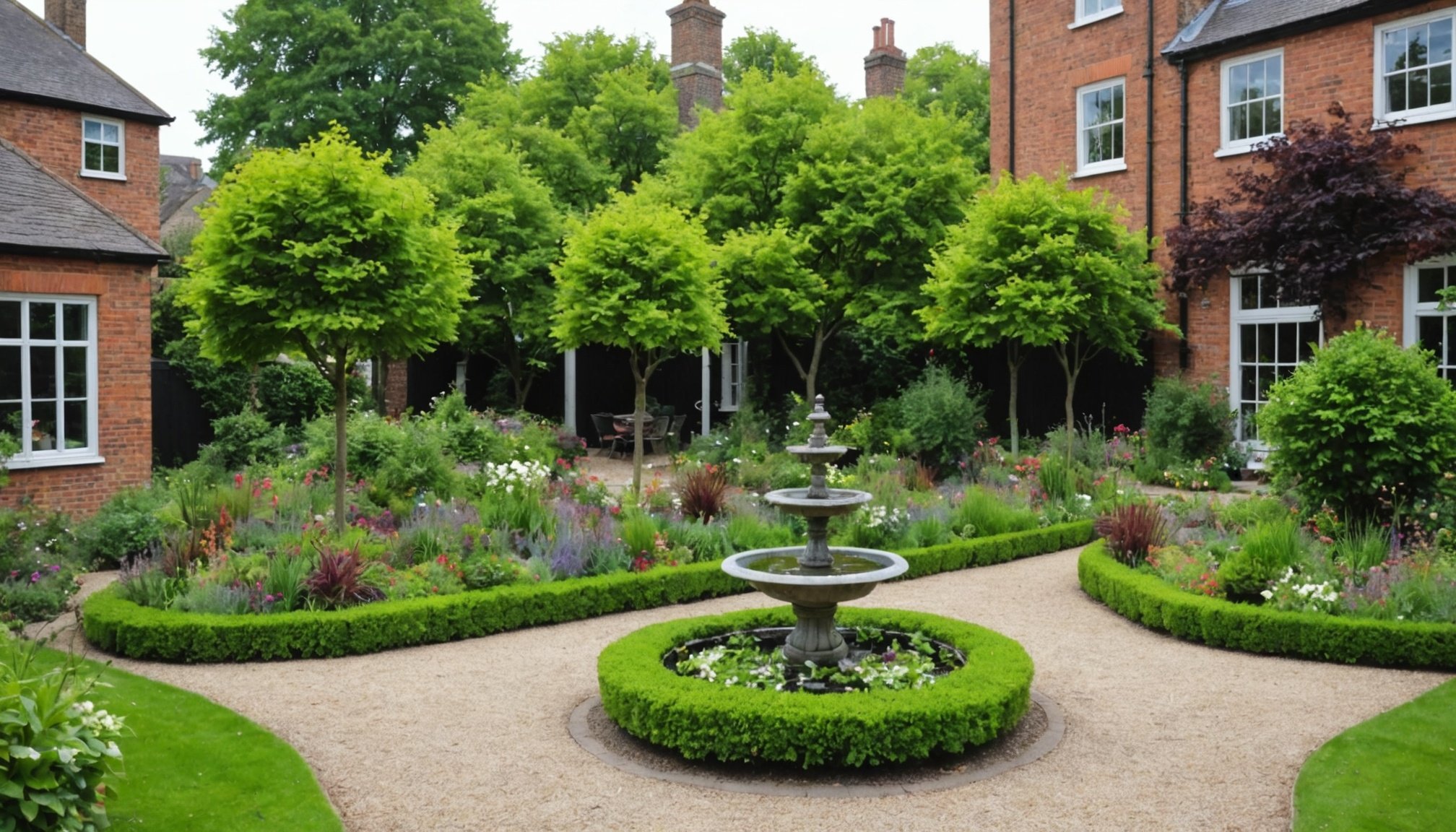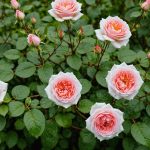Creating an Enchanting Victorian Garden in Central London: Top Plant Selections and Design Tips
Understanding the Victorian Garden Aesthetic
When it comes to creating a Victorian garden in central London, it’s essential to understand the aesthetic and principles that defined this era. Victorian gardens were known for their lush, vibrant plantings, intricate designs, and a mix of formal and informal elements. Here, we’ll delve into the top plant selections and design tips to help you recreate this enchanting style in your own garden.
Historical Context and Influence
The Victorian era, spanning from the late 1830s to the early 1900s, saw a significant rise in gardening as a popular pastime among the middle and upper classes. Gardens like Kew Gardens, which was adopted as a national botanical garden in 1840, played a crucial role in influencing garden design during this period[5].
Additional reading : Top Indoor Seed Starting Methods for UK Gardeners: Unlock Your Green Thumb
Choosing the Right Plants
Selecting the right plants is crucial for a Victorian garden. Here are some top choices that will help you achieve that classic, enchanting look.
Perennials and Flowers
Perennials were a staple in Victorian gardens, offering a wide range of colors and textures throughout the year.
Also to see : Top Natural Solutions to Combat Rose Black Spot in Humid UK Climates
- Clematis: These climbing plants were highly prized for their large, showy flowers. Varieties like Clematis Henryi, with its big white flowers, and Clematis Jackmanii, with its medium-sized blue-purple flowers, are excellent choices[1].
- Coreopsis: Coreopsis “Jethro Tull” with its single golden-yellow daisies and Coreopsis verticillata “Moonbeam” with its yellow flowers are perfect for adding a sunny touch to your garden[1].
- Delphinium: Delphinium ‘Pink Punch’ is a beautiful choice, offering pink flowers that are deer and rabbit resistant[1].
- Eutrochium purpureum (Joe Pye Weed): This plant is a must in any butterfly garden, with its pink flowers and tall stature[1].
Grasses and Ornamental Foliage
Grasses and plants with ornamental foliage add depth and texture to your garden.
- Miscanthus Sinensis: Varieties like Miscanthus Sinensis “Adagio” and Miscanthus Sinensis “Huron Sunrise” offer narrow foliage and beautiful plumes in shades of pink to white[1].
- Festuca glauca “Blue Select”: Although currently discontinued, this compact, evergreen grass is admired for its vivid blue-green foliage[1].
- Eupatorium rugosum “Chocolate”: This plant has dark bronzy-brown leaves in spring and summer, gradually turning green as the autumn display of fuzzy white flower clusters begins[1].
Garden Design Tips
Creating a Victorian garden is not just about the plants; it’s also about the design and layout.
Layered Planting
Victorian gardens often featured layered planting, where different levels of plants were used to create a visually appealing and dynamic garden.
- Ground Level: Use low-growing perennials and grasses like Coreopsis and Festuca to create a lush carpet.
- Mid-Level: Incorporate medium-sized plants like Delphinium and Eutrochium to add height and color.
- Upper Level: Use climbing plants like Clematis to adorn trellises, arbors, or walls.
Hardscaping and Pathways
Hardscaping was an integral part of Victorian garden design, providing structure and access.
- Pathways: Use natural stone or brick pathways to create meandering paths through your garden.
- Garden Rooms: Divide your garden into different “rooms” or sections, each with its own unique character and planting scheme, as seen in Joanne Bernstein’s London garden[3].
Incorporating Structural Elements
Structural elements like greenhouses, conservatories, and water features were common in Victorian gardens.
Greenhouses and Conservatories
Inspired by places like Kew Gardens, which boasts the iconic Palm House and Temperate House, you can incorporate smaller versions of these structures into your garden.
- Mini Greenhouses: Use smaller greenhouses to house exotic plants and create a microclimate for sensitive species.
- Conservatories: If possible, add a conservatory to your home to extend the growing season and enjoy your plants year-round[5].
Water Features
Water features were a hallmark of Victorian gardens, adding both visual and auditory appeal.
- Ponds and Fountains: Create a small pond or fountain to attract wildlife and add a soothing sound to your garden.
- Water Lilies: Incorporate water lilies, like those found in the Waterlily House at Kew Gardens, to add color and interest to your water features[5].
Practical Tips for Maintenance
Maintaining a Victorian garden requires some effort, but here are some practical tips to help you keep your garden looking its best.
Mulching and Soil Care
- Mulch Heavily: Mulch around your plants to retain moisture and suppress weeds. For example, Crocosmia “Lucifer” benefits from heavy mulching for winter protection[1].
- Soil Preparation: Ensure your soil is well-draining and rich in organic matter. For plants like Darmera Peltata, regular to moist soil is essential[1].
Pruning and Deadheading
- Regular Pruning: Prune your plants regularly to maintain shape and promote healthy growth. For instance, bamboo varieties like Fargesia murielae need regular thinning and height control[3].
- Deadheading: Deadhead flowers to encourage more blooms. This is particularly important for perennials like Coreopsis and Delphinium.
Community and Resources
Creating and maintaining a Victorian garden can be a rewarding but challenging task. Here are some resources and community tips to help you along the way.
Nurseries and Mail Order
- Local Nurseries: Support local nurseries like Anna’s Perennials Nursery & Gardens or Marchants Hardy Plants, which offer a wide range of herbaceous perennials and grasses[1][2].
- Mail Order: Consider mail order services for accessing a broader range of plants, especially if you’re looking for specific or rare varieties.
Online Communities and Forums
- Gardenista and Remodelista: Join online communities like Gardenista and Remodelista for tips, advice, and inspiration from other gardeners[3].
- Social Media: Follow gardening groups on Twitter and Facebook to stay updated on the latest trends and advice.
Creating an enchanting Victorian garden in central London is a journey that requires careful plant selection, thoughtful design, and regular maintenance. By incorporating a mix of perennials, grasses, and structural elements, you can recreate the charm and beauty of a classic Victorian garden.
Detailed Plant List
Here is a detailed list of some of the top plants mentioned for your Victorian garden:
- Clematis Henryi
- Big white flowers
- Height: 9-15 feet
- Zone: 4
- Coreopsis “Jethro Tull”
- Single golden-yellow daisies
- Height: 12-16 inches
- Zone: 5
- Delphinium ‘Pink Punch’
- Pink flowers
- Height: 3-5 feet
- Zone: 3
- Deer and rabbit resistant
- Eutrochium purpureum (Joe Pye Weed)
- Pink flowers
- Height: 5-6 feet
- Zone: 3
- Miscanthus Sinensis “Adagio”
- Narrow foliage, pink to white plumes
- Height: 3-4 feet
- Zone: 5
- Festuca glauca “Blue Select”
- Compact, evergreen grass
- Height: 8-15 inches
- Zone: 4
- Eupatorium rugosum “Chocolate”
- Dark bronzy-brown leaves, fuzzy white flower clusters
- Height: 3-4 feet
- Zone: 5
Comparative Table of Plant Characteristics
| Plant Name | Height | Zone | Sun Requirements | Special Features |
|---|---|---|---|---|
| Clematis Henryi | 9-15 feet | 4 | Full sun | Big white flowers |
| Coreopsis “Jethro Tull” | 12-16 inches | 5 | Full sun | Single golden-yellow daisies |
| Delphinium ‘Pink Punch’ | 3-5 feet | 3 | Sun to light shade | Pink flowers, deer and rabbit resistant |
| Eutrochium purpureum | 5-6 feet | 3 | Full sun | Pink flowers, must in butterfly gardens |
| Miscanthus Sinensis “Adagio” | 3-4 feet | 5 | Sun to part shade | Narrow foliage, pink to white plumes |
| Festuca glauca “Blue Select” | 8-15 inches | 4 | Full sun | Compact, evergreen grass |
| Eupatorium rugosum “Chocolate” | 3-4 feet | 5 | Sun to part shade | Dark bronzy-brown leaves, fuzzy white flower clusters |
Quotes and Insights
- “Marchants was always about being on the cutting edge of plants – herbaceous and grasses principally. We scoured the UK and Europe too for the best varieties adding them to our own selections and home bred forms,” – Henry, Hannah, and Jean from Marchants Hardy Plants[2].
- “We installed a root barrier around the planting bed to contain the bamboo,” – Joanne Bernstein, landscape designer, on managing bamboo in her London garden[3].
By following these tips and selecting the right plants, you’ll be well on your way to creating an enchanting Victorian garden in the heart of London. Happy gardening
Plant Care and Maintenance Tips
Plant care is essential to ensure the health and vitality of your garden. Adopting proper garden maintenance techniques throughout the year can yield rewarding results.
Seasonal Care Routines
Seasonal gardening is key to thriving Victorian gardens. Each season presents unique challenges and opportunities. It’s crucial to perform seasonal checks to prepare and protect plants from weather changes.
Spring: Prune plants to encourage growth and remove any dead material lingering from winter.
Summer: Water deeply to withstand dry spells, checking for pests that might have emerged.
Autumn: Mulch to trap warmth and nutrients in the soil.
Winter: Wrap susceptible plants to protect them from frost.
Pest Management Strategies
Victorian gardens often grapple with pests, such as aphids and slugs. Preventative care is vital. Checking plants regularly can help catch infestations early.
To protect your plants, opt for eco-friendly pest control options. Neem oil and diatomaceous earth are effective without harming beneficial insects.
Soil and Fertilization Needs
Understanding your soil type aids in choosing the right plants and fertilizers. London gardens typically have clay soil, which retains nutrients well. This can support a range of plants, but drainage might need improvement.
Regularly fertilizing with an all-purpose blend ensures plants receive essential nutrients, promoting vigorous, healthy growth.
Planting Arrangements and Design Ideas
Creating an inviting garden involves thoughtful planting arrangements, which can dramatically enhance visual impact. The secret lies in selecting plants that complement each other in color, texture, and height, establishing a visually engaging landscape. For instance, contrasting colors like purples and yellows or heights such as tall grasses with low groundcovers create dynamic visuals.
A good garden design integrates pathways and focal points to ensure that the layout is cohesive and guides visitors through the space. Pathways, made from materials like gravel or stepping stones, offer practical guidance while adding charm. Focal points—like a meticulously pruned bush or a sculpture—anchor the garden’s design, drawing the eye to interesting areas.
Incorporating structural elements like trellises and arches can introduce height and elegance to the garden. These additions provide support for climbing plants, enhancing the garden’s vertical appeal. Arches, placed strategically, can function as entrances or transitions between different garden areas, offering a sense of mystery and exploration.
By combining effective planting combinations with thoughtful layout designs, creating a harmonious and stunning garden is both an art and a practice. Using these fundamental ideas, you can craft a picturesque setting that offers beauty and tranquility.
Resources for Victorian Garden Enthusiasts
Exploring Victorian gardening techniques can be a rewarding journey. To bring your garden aspirations to life, consider local nurseries that specialise in plants from the Victorian era. These nurseries often provide a variety of species and expert advice to help you recreate authentic historical gardens.
Joining gardening clubs is another excellent way to enhance your knowledge and connect with fellow enthusiasts. Many local gardening clubs have a specific focus on historical gardens, offering workshops and group projects. These clubs provide a sense of community and a platform to exchange ideas and techniques.
For those who prefer digital learning, various online resources and literature are invaluable. Websites and forums dedicated to Victorian gardening are filled to the brim with articles, guides, and user discussions. Furthermore, digital archives of 19th-century gardening books can be accessed, providing insights into historical techniques.
To widen your knowledge, consider these resources:
- Local nurseries with Victorian plant specialisation
- Community gardening clubs focusing on historical restoration
- Online platforms and literature dedicated to Victorian gardening
By tapping into these resources, gardening enthusiasts can cultivate thriving gardens reminiscent of the elegant Victorian era, benefiting both their personal aspirations and the broader community’s interest in historical preservation.











